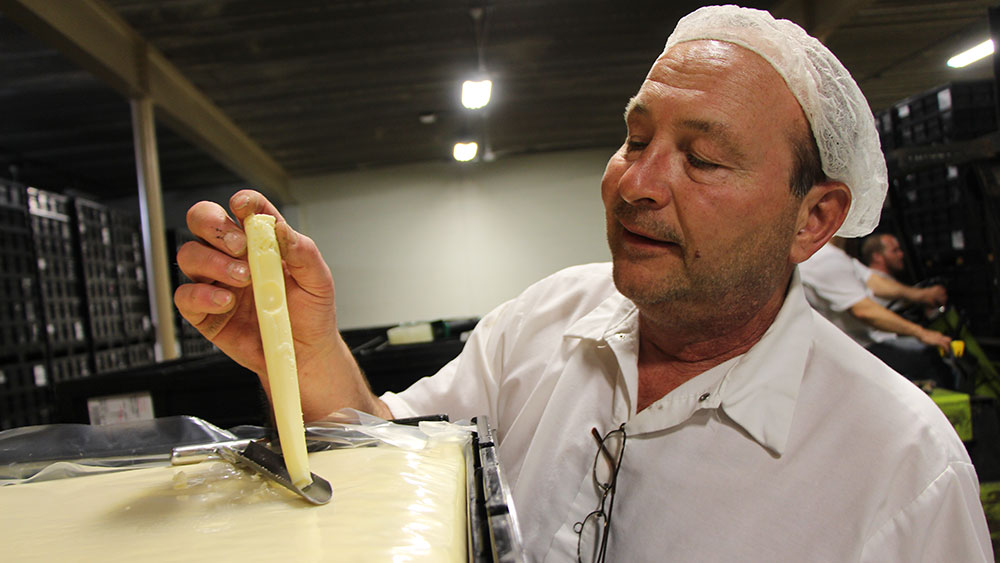Unlocking the Keys of Artisanal Cheese Making: A Step-by-Step DIY Overview
In the world of cooking workmanship, artisanal cheese making stands as a testament to the fragile equilibrium in between practice and innovation. As we embark on this trip to debunk the art of developing exquisite cheeses, we are faced with a tapestry of skills and secrets waiting to be untangled.
Picking the Right Milk
When getting started on the journey of artisanal cheese making, the choice of milk plays a vital duty in establishing the quality and features of the final item. The kind of milk chosen influences the flavor, appearance, and in general profile of the cheese.
When selecting milk for cheese making, it is very important to think about the fat content. Higher fat web content in milk can result in a creamier and richer cheese, while reduced fat content may bring about a drier and firmer appearance. Additionally, the resource of the milk, whether from cows, goats, lamb, or buffalo, contributes distinctive flavors and attributes to celebrity (Floridia Cheese Melbourne). Each kind of milk brings its own subtleties, permitting for a large range of cheese varieties to be crafted based on the selected milk. Ultimately, the option of milk is an essential choice that sets the foundation for a successful artisanal cheese-making undertaking.
Culturing and Coagulating
To start the cheese-making process, the important steps of culturing and coagulating must be carefully executed to change milk right into curds and whey. The type of culture used can dramatically influence the taste, structure, and ripening of the final cheese product.

The timing and temperature level control during culturing and coagulation are essential variables that influence the last result of celebrity. Appropriate execution of these actions is necessary to ensure the desired appearance, taste, and uniformity of the artisanal cheese being created.
Draining Pipes and Pressing Curds
After the milk proteins have actually coagulated and the curds have been reduced to launch whey, the next critical step in artisanal cheese making includes draining pipes and pushing the curds to achieve the wanted appearance and consistency of the final cheese product. The time for draining pipes can vary depending on the kind of cheese being made and the wanted moisture material.
Pushing aids eliminate any kind of continuing to be whey and compacts the curds to create a strong cheese wheel. Correct draining pipes and pushing are important steps that considerably impact the quality and qualities of the artisanal cheese being produced.
Aging and Flavoring Techniques
Executing thorough aging and flavoring methods is pivotal in improving the deepness and complexity of artisanal cheeses, boosting their preference accounts to splendid degrees of improvement and refinement. Aging plays a critical role in creating the unique flavors and appearances that distinguish artisanal cheeses.
Seasoning strategies also contribute substantially to the last taste of artisanal cheeses. Cheesemakers may select to present additional flavors by including active ingredients such as herbs, flavors, or also fruits right into celebrity during the production procedure. In addition, some cheeses are cleaned or rubbed with various liquids, such as salt water or alcohol, to boost their tastes and appearances.
Wrapping and Keeping Cheeses

Verdict
In conclusion, understanding the art of artisanal cheese making involves meticulously selecting the ideal milk, following accurate culturing and coagulating procedures, draining and pushing curds efficiently, and using numerous aging and flavoring methods. By adhering to these steps carefully and with focus to detail, you can produce your very own delicious and distinct cheeses in the house. Bear in mind go to these guys to wrap and keep your cheeses appropriately to ensure ideal flavor and structure advancement. Happy cheese making!
Each kind of milk brings its very own subtleties, permitting for a vast array of cheese selections to be crafted based on the picked milk.After the milk healthy proteins have actually coagulated and the curds have been cut to release whey, the next important step in artisanal cheese making involves draining and pushing the curds to attain the wanted appearance and uniformity of the final cheese product. The majority of cheeses must be wrapped in wax paper or cheese paper try this out to permit them to take a breath while shielding them from drying out. For cheeses that require to proceed aging, such as bloomy skins or washed peels, guarantee they are kept in a great atmosphere like a cheese cave or a refrigerator established to the proper temperature. By paying attention to the wrapping and storage space of artisanal cheeses, cheese manufacturers and lovers can preserve the honesty of these specials and completely enjoy their intricate flavors.
Comments on “Why Floridia Cheese Thomastown Is a Gem in Melbourne Made Cheese”